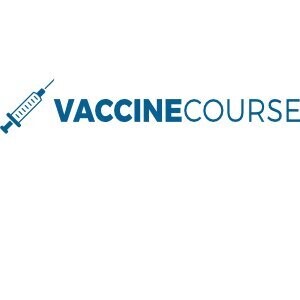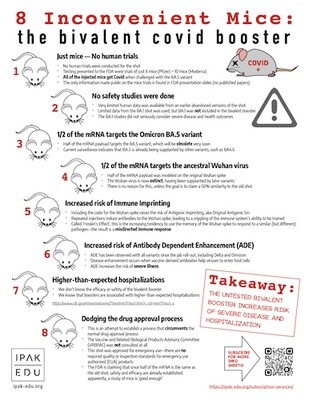Autism: Biological and Medical Insights
Autism: Biological and Medical Insights
Autism: Biological and Medical Insights (IPAK‑EDU)
Duration: 24 weeks (1×2‑hr live session/week + optional 1‑hr lab/journal club)
Format: Live lecture, discussion, data labs, case conferences, structured debates. Focus is on the STATE OF THE SCIENCE for parents & pediatricians.
Weekly Schedule
Week 1 — Autism Phenotypes and Lumping Errors
Focus: Define phenotypes/endotypes; stop composite “global autism” outcomes.
Action: Build a phenotype × comorbidity map; pre‑specify domain‑specific outcomes.
Week 2 — Neurodevelopmental Timing
Focus: Critical windows; dose–timing–response; target‑trial thinking.
Action: Draft a timing‑aware DAG and target‑trial synopsis.
Week 3 — Immune Dysregulation & Microglia (with mast‑cell interface)
Focus: Microglial activation; cytokines; BBB; mast‑cell hypotheses.
Parent/Clinician Action: Consider N‑acetylcysteine for irritability in a time‑boxed, measured trial; luteolin and other options to reduce chronic microglial activation. State of the science.
Week 4 — Mitochondria, Redox, Bioenergetics
Focus: GSH/one‑carbon coupling; lactate/pyruvate; acyl‑carnitines.
Action: Interpret a metabolic panel; propose confirmatory tests with blinded readouts.
Week 5 — Sleep & Circadian Biology
Focus: Insomnia/PLMD/REM; melatonin pathway; light timing.
Parent/Clinician Action: Run an actigraphy‑anchored sleep protocol with pre‑declared endpoints.
Week 6 — GI Physiology & Gut–Brain Axis
Focus: Motility, permeability, bile acids, butyrate; dysbiosis claims.
Parent/Clinician Action: Draft a constipation‑first pathway; draft a 12‑week GFCF or 4–6‑week low‑FODMAP trial with stop rules and objective GI/behavioral measures.
Week 7 — Differential Diagnosis & Instrument Validity
Focus: ID vs language disorder vs social anxiety/selective mutism vs ADHD; ADOS‑2/ADI‑R limits.
Action: Rewrite an intake; fix instrument misuse; document payer‑aligned coding.
Week 8 — Endocrine–Immune Crosstalk & Sex Differences
Focus: Steroidogenesis, thyroid axes, sex‑dimorphic microglia; endocrine disruptors.
Action: Build a sex‑stratified analysis plan.
Week 9 — Communication Science & Augmentative and Alternative Communication for Autism (and Spelling Methods)
Focus: Apraxia vs dysarthria; device feature matching; prompt‑dependence traps.
Action: Prescribe AAC; require independent authorship verification before accepting S2C/RPM outputs.
Deliverable: 6‑week blinded‑endpoint AAC trial plan.
Week 10 — EEG/Connectivity & Seizure–Catatonia Interface
Focus: Subclinical epileptiform activity; catatonia; masked EEG adjudication.
Action: Build a seizure‑aware pathway with SUDEP risk controls.
Week 11 — Sensory Processing & Motor Systems
Focus: Proprioception, vestibular, interoception; cerebellar roles.
Action: Construct a blinded sensory measurement battery with rater training.
Week 12 — Epidemiologic Methods Clinic
Focus: Confounding; overadjustment; collider traps; target‑trial emulation.
Deliverable: Methods Critique #2 with declared estimand and bias simulation.
Week 13 — Genes and Autism - GUEST LECTURER
Focus:Genes impacting neurodevelopment, detoxification, cellular energetics
Deliverable: Social media post on call for research on use of genes for guided therapeutics.
Focus: Diagnostic/prognostic/predictive/PD; central reading; decision‑curve analysis. Types of biomarkers: diagnostic, prognostic, predictive, pharmacodynamic (PD), safety.
Action: Stand up a video‑coding + eye‑tracking + HRV pipeline.
Validation ladder: discovery → analytical validity → clinical validity → clinical utility.
Evidence standards: STARD (diagnostic), TRIPOD (prediction models), FDA biomarker qualification framework.
Bias & pitfalls: batch effects, preanalytic error, overfitting, multiple testing, spectrum bias, PPV/NPV illusions in low-prevalence subgroups.
Ethical use: avoiding false reassurance, stratifying trial entry, consent for biobanking.
Action (lab/clinic exercise):
Specify its intended context of use (diagnosis, prognosis, treatment selection).
Build a decision-curve analysis to test whether adding it improves net benefit over standard care.
Hands-on pipeline: create a reproducible flow for one biomarker domain (serum, imaging, EEG, or wearable data). Include QC steps, blinded reading, and pre-specified analysis plan.
Week 15 — Nutrition & Metabolic Cofactors
Focus: Folate forms, B‑vitamins, carnitine, NAC, omega‑3, iron/zinc; interaction tables.
Parent/Clinician Action: Time‑box NAC for irritability; run nutrient stacks with drug–nutrient interaction checks.
Week 16 — Infectious, Post‑Infectious, Autoimmune; CFD/FRα Subgroup
Focus: Molecular mimicry; anti‑brain antibodies; cerebral folate deficiency; FRα autoantibodies.
Parent/Clinician Action: If FRAA positive and language‑impaired, run a 12‑week folinic acid (leucovorin) protocol with language endpoints and AE plan; otherwise do not generalize.
Week 17 — Systems Toxicology & Exposomics
Focus: Metals, solvents, air pollution, mixtures; kinetics and dose metrics.
Parent/Clinician Action: Environmental clean‑up kit—HEPA for air, RO/GAC for water, dust/lead controls; avoid provoked tests and chelation.
Research‑grade discussion: Silicon‑rich water/silicic acid and aluminum kinetics; no ASD outcomes; present as toxicology background only.
Week 18 — Safety Engineering & Pharmacovigilance
Focus: AE taxonomies; causality adjudication; DSMB/DMC; registry signal detection; drug–nutrient interactions.
Deliverable: Clinic‑ready AE capture plan and escalation tree.
Week 19 — Integrative Care Pathways & Shared Decision‑Making
Focus: Sequencing; cost/risk ranking; caregiver workload; environmental accommodations.
Deliverable: Pathway dossier with blinded endpoints and AE plan.
Week 20 — Access, Policy, and Cost Models
Focus: Coverage, coding, service deserts, waitlist math, telehealth; value‑based care that prices caregiver time.
Deliverable: One‑page policy brief with measurable targets.
Week 21 — Adaptive, N‑of‑1, and Platform Trial Design
Focus: Bayesian/adaptive decisions; response‑adaptive randomization; multiplicity control.
Research‑grade items to design ethically: taVNS/rTMS adjuncts; intranasal insulin for defined genetic syndromes or SIB research protocols only.
Week 22 — Structured Debate: Etiology, Mechanism, Thresholds for Action
Focus: Steel‑man opposition; defend falsifiable positions; declare estimands and blinded outcomes.
Deliverable: 1,200‑word paper + live debate.
Week 23 — Lifespan, Transition, and Aging
Focus: Employment, housing, guardianship vs supported decision‑making; midlife risks; telehealth adaptations.
Deliverable: Lifespan plan with budget, schedule, and safety accommodations.
Week 24 — Capstone Presentations & Oral Defense
Format: 12‑min talk + 8‑min Q&A; 8–15‑page final with preregistration draft, falsification tests, sensitivity analyses.









